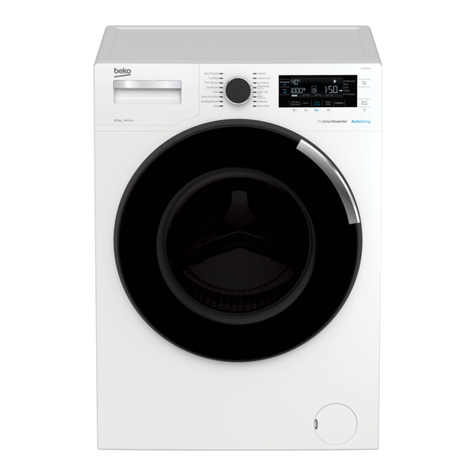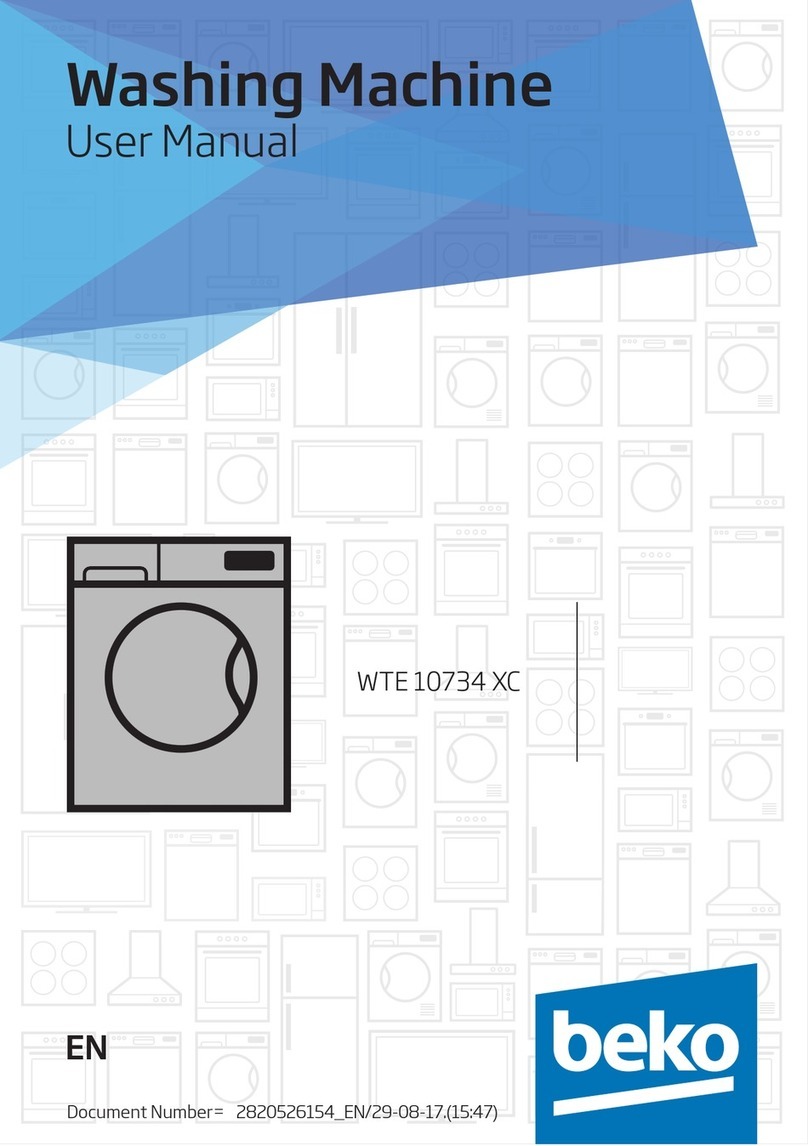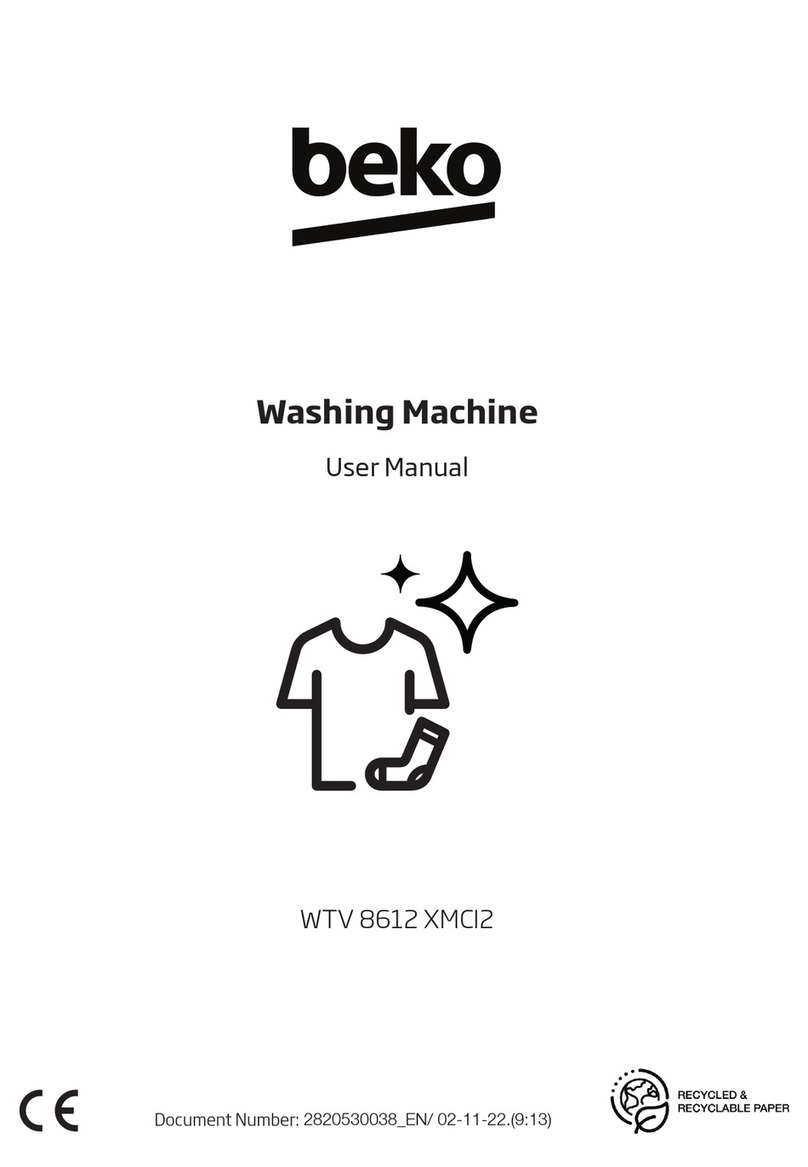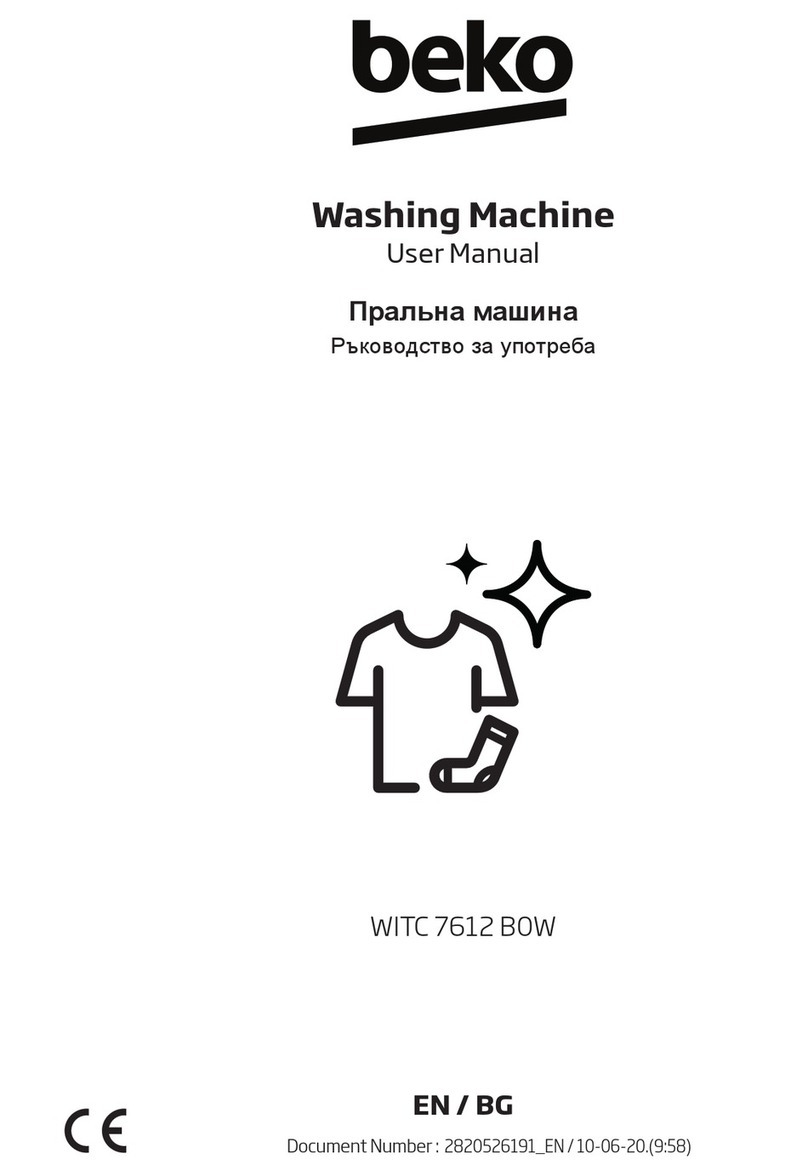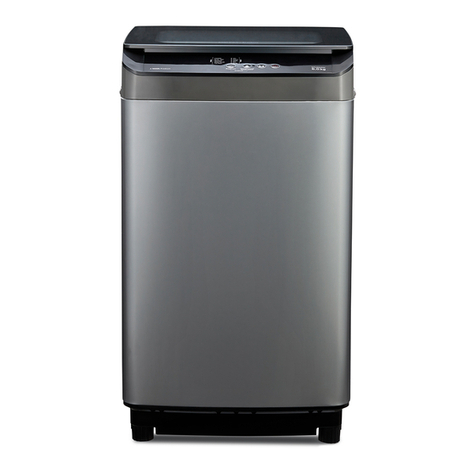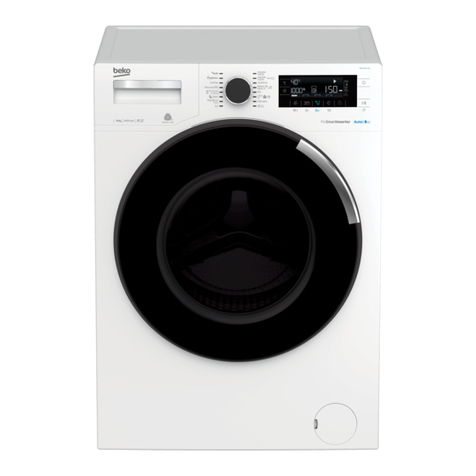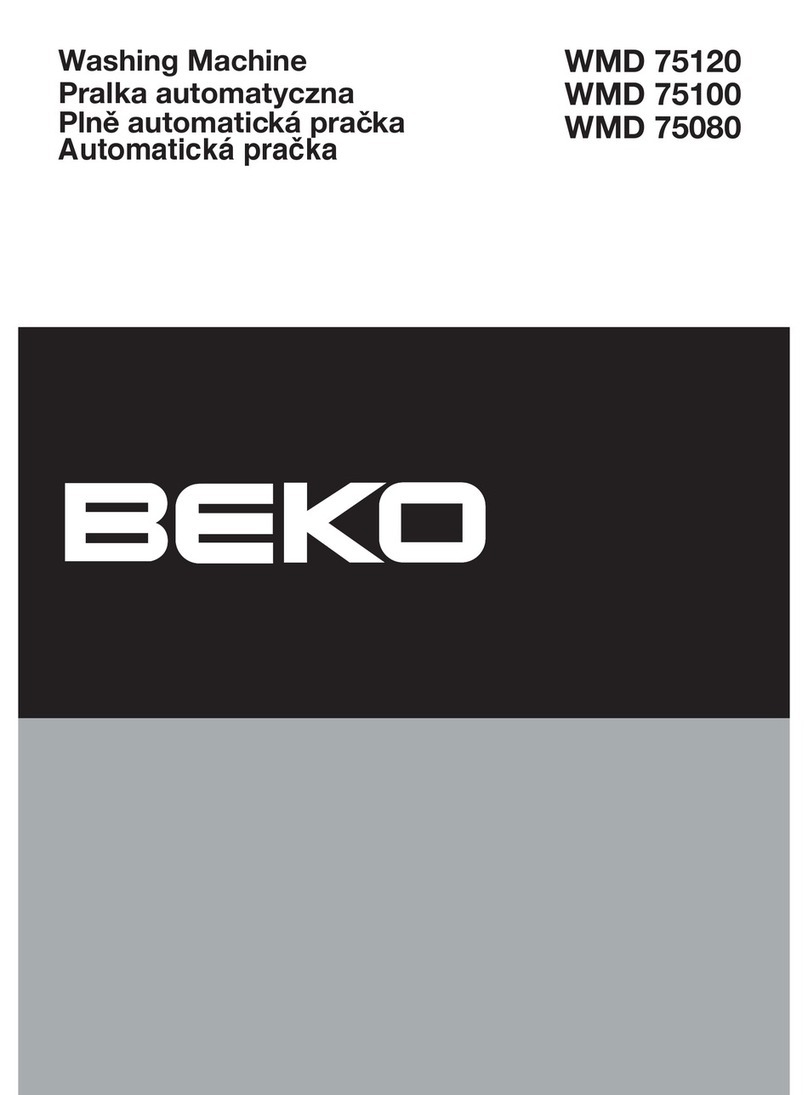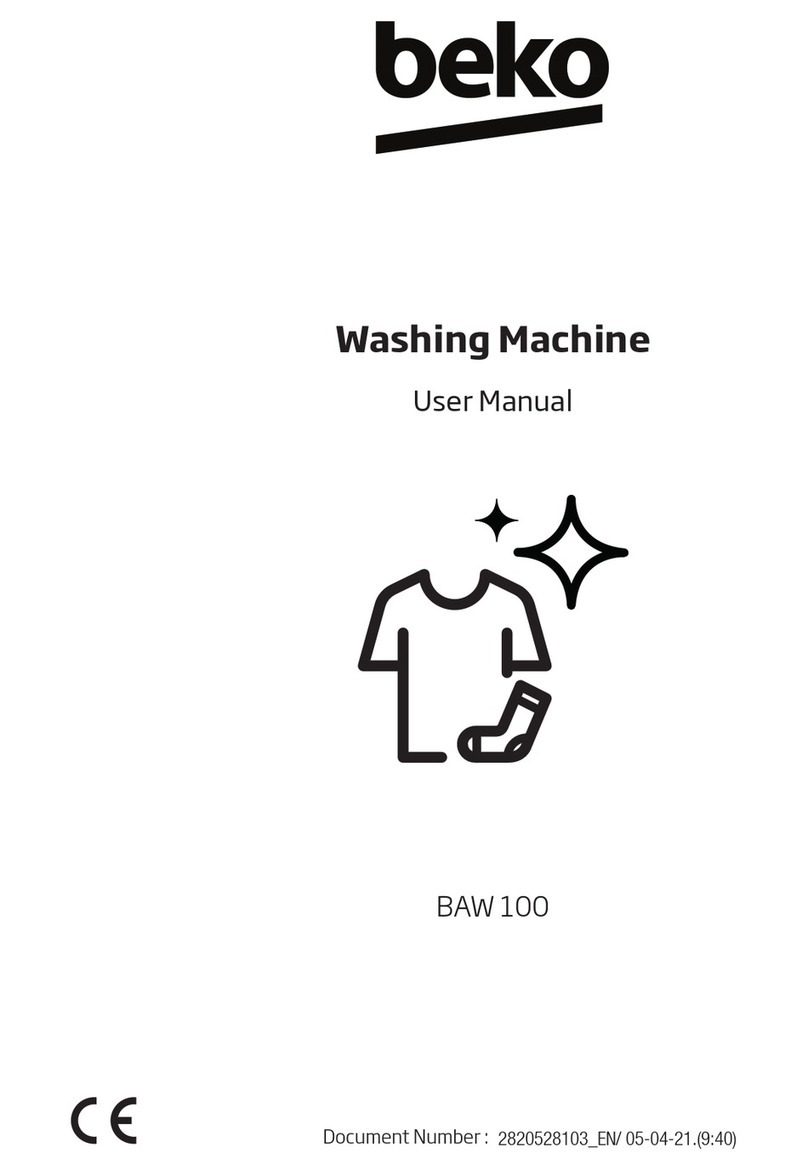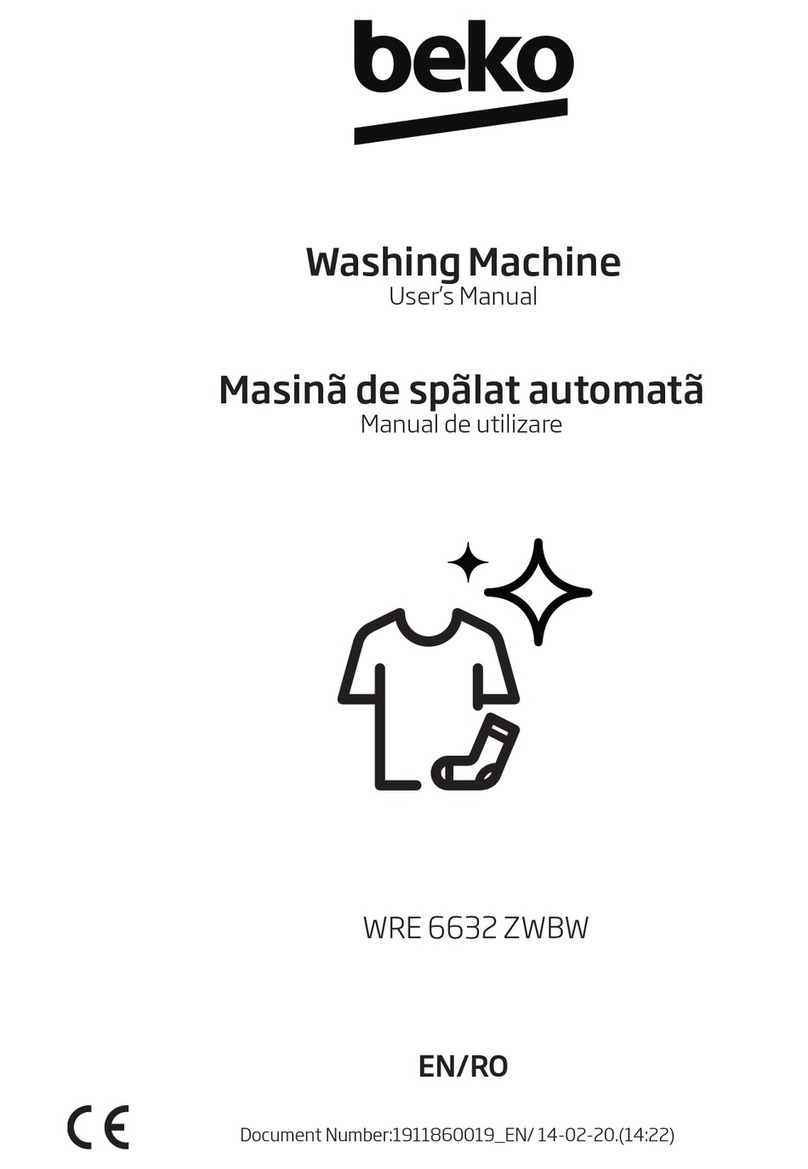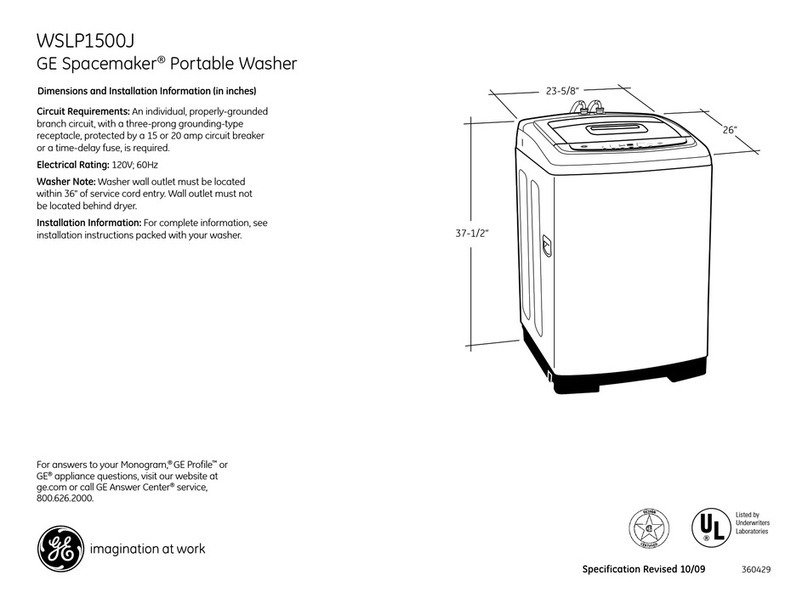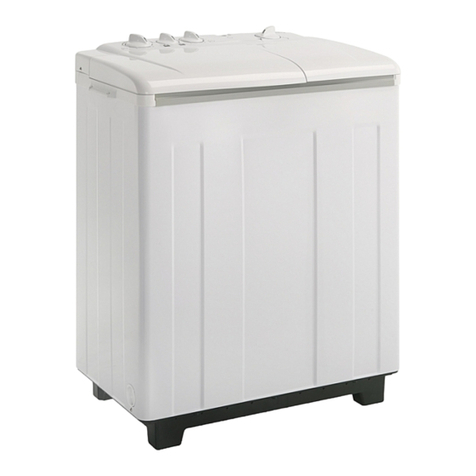
3/ EN Washing Machine / User’s Manual
1 Important nstructons for safety and envronment
This section contains safety instructions that will help protect from risk of personal injury or proper-
ty damage. Failure to follow these instructions shall void any warranty.
1.1 General safety
• This product can be used by children at and above 8 years old and by persons whose physical,
sensory or mental capabilities were not fully developed or who lack experience and knowledge
provided that they are supervised or trained on the safe usage of the product and the risks it
brings out. Children must not play with the product. Cleaning and maintenance works should not
be performed by children unless they are supervised by someone.
• Children of less than 3 years should be kept away unless continuously supervised.
• Never place the product on a carpet-covered floor. Otherwise, lack of airflow beneath the machi-
ne will cause electrical parts to overheat. This will cause problems with your product.
• If the product has a failure, it should not be operated unless it is repaired by the Authorized
Service Agent. There is the risk of electric shock!
• This product is designed to resume operating in the event of powering on after a power interrup-
tion. If you wish to cancel the programme, see "Cancelling the programme" section.
• Connect the product to a grounded outlet protected by a 16 A fuse. Do not neglect to have the
grounding installation made by a qualified electrician. Our company shall not be liable for any
damages that will arise when the product is used without grounding in accordance with the local
regulations.
• The water supply and draining hoses must be securely fastened and remain undamaged.
Otherwise, there is the risk of water leakage.
• Never open the loading door or remove the filter while there is still water in the drum. Otherwise,
risk of flooding and injury from hot water will occur.
• Do not force open the locked loading door. The loading door will be ready to open just a few
minutes after the washing cycle comes to an end. In case of forcing the loading door to open, the
door and the lock mechanism may get damaged.
• Unplug the product when not in use.
• Never wash the product by spreading or pouring water onto it! There is the risk of electric shock!
• Never touch the plug with wet hands! Never unplug by pulling on the cable, always pull out by
grabbing the plug.
• Use detergents, softeners and supplements suitable for automatic washing machines only.
• Follow the instructions on the textile tags and on the detergent package.
• The product must be unplugged during installation, maintenance, cleaning and repairing proce-
dures.
• Always have the installation and repairing procedures carried out by the Authorized Service
Agent. Manufacturer shall not be held liable for damages that may arise from procedures carried
out by unauthorized persons.
• If the power cable is damaged, it must be replaced by the manufacturer, after sales service or a
similarly qualified person (preferably an electrician) or someone designated by the importer in
order to avoid possible risks.
• Place the product on a rigid, flat and level surface.
• Do not place it on a long-pile rug or similar surfaces.
• Do not place the product on a high platform or near the edge on a cascaded surface.
• Do not place the product on the power cable.
• Never use sponge or scrub materials. These will damage the painted, chrome plated and plastic
surfaces.
1.2 Intended use
• This product has been designed for domestic use. It is not suitable for commercial use and it must
not be used out of its intended use.
• The product must only be used for washing and rinsing of laundry that are marked accordingly.
• The manufacturer waives any responsibility arisen from incorrect usage or transportation.
1.3 Chldren's safety
• Packaging materials are dangerous to children. Keep packaging materials in a safe place away
from reach of the children.
• Electrical products are dangerous for the children. Keep children away from the product when it is
in use. Do not let them to tamper with the product. Use child lock to prevent children from inter-
vening with the product.

